The world has been computing for thousands of years and uses tools to accomplish each task. From the ancient abacus to modern day scientific calculators, technological advances continue to improve upon the methods used for computing and calculating. Here is a calculator timeline that shows major advances throughout the ages.
4000-12000 B.C.: Sumerians kept track of commercial transactions on clay tablets. The Sumerians were the first known civilization and it is believed this system was the precursor for the calculator.
3000 B.C.: Babylonians create an abacus following the Sumerians. The abacus would spread throughout Egypt, Greece, Persia and Asia.
1300 B.C.: Chinese use wire and beads to redesign abacus. The Chinese abacus shows similarities to the Roman model. It is unclear which model influenced the other.
250-230 B.C.: Prime numbers are calculated with the Sieve of Eratosthenes. The Sieve of Eratosthenes will later be used by computers.
79 A.D.: The Antikythera Device is used to determine months and astronomical positions. The device derived its name after it was recovered from the Antikythera wreck.
1612 A.D.: John Napier creates Napier's Bones for calculating multiplication equations for the first nine multiples of a number.
|
_____________
√46 78 53 99 = 6839.9
36—10 78
10 24
-----
54 53
40 89
-----
13 64 99
12 30 21
--------
1 34 78 00
1 23 11 01
----------
11 66 99
|
1620 A.D.: Edmund Gunter develops logarithm that is the precursor for the slide rule. Logarithms would continue to be used for centuries and would be instrumental in the development of computers.
1622 A.D.: William Oughtred creates slide rule based upon Napier's Bones. The slide rule was used for centuries until it made way for mechanical and electronic calculators.
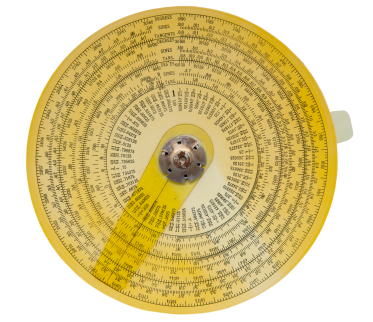
1623 A.D.: William (Wilhelm) Schickard designs the first calculator to assist in multiplication known as the “Calculating Clock." The original machine created by Schikard was destroyed in a fire. The designs were lost and it wasn't until 1957 that a replica of Schickard's "Calculating Clock" was made.
1642 A.D.: Blaise Pascal creates the first mechanical gear driven adding machine called the Pascaline or Arithmatique. He was also the author of Pascal's Law which was invaluable in the field of hydraulics.
1666 A.D.: Samuel Morland creates mechanical calculator that can add and subtract. In 1673, Morland would author the book "The Description and Use of Two Arithmetick Instruments," It would be the first book dedicated to calculators.
1674 A.D.: Gottfried Wilhelm Leibniz creates Stepped Reckoner. The device could add, subtract, multiply, and divide.
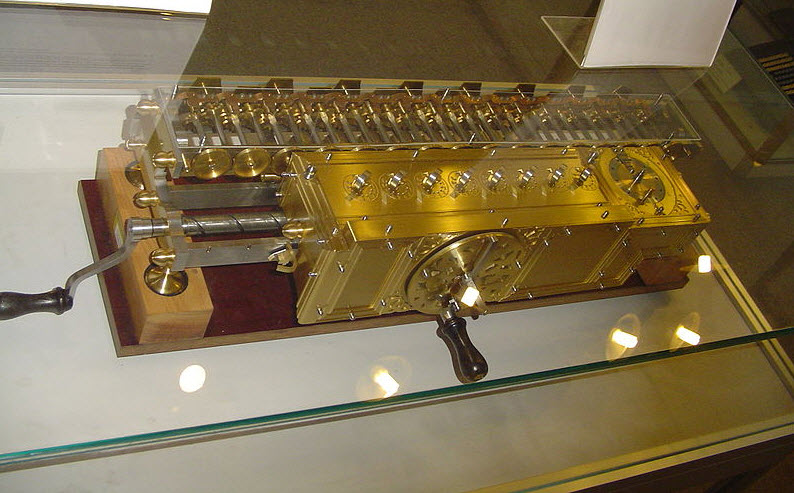
1774 A.D.: Philipp-Matthaus Hahn sells machine that may calculate up to 12 digits.
1777 A.D.: Charles, the third Earl of Stanhope, creates a calculator capable of performing multiplication called the Stanhope Demonstrator.
1804 A.D.: Joseph-Marie Jacquard creates punched card looms that was useful for weaving.
1820 A.D.: Charles Xavier Thomas invents the Arithmometer that becomes first mass produced calculator.
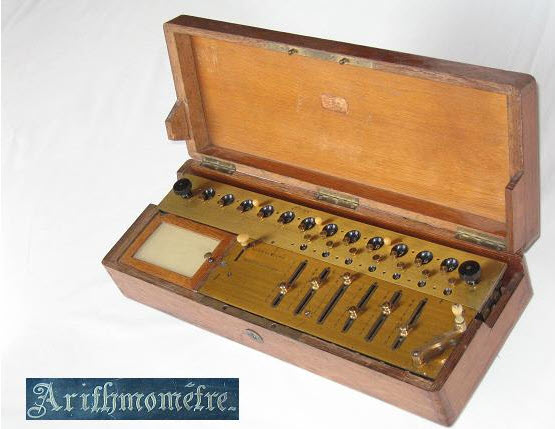
1822 A.D.: Charles Babbage begins building the Difference Engine.
1838 A.D.: Charles Babbage abandons Difference Engine and works on Analytical Engine.
1851 A.D.: Victor Schilt creates key driven calculating machine.
1853 A.D.: The Scheutz Difference Engine is built.
1854 A.D.: George Boole writes An Investigation on the Laws of Thought that will be known as Boolean Theory and set the foundation for computer development.
1961 A.D.: First electronic calculators invented: Anita MK VII and Anita MK8.
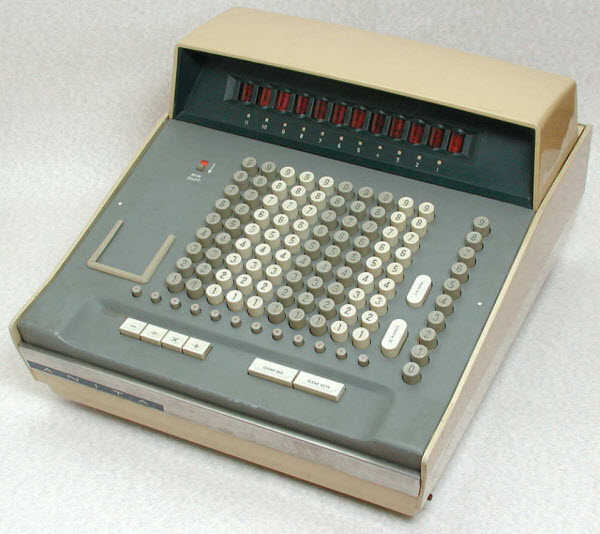
1963 A.D.: First commercial calculators released for public sale includes the Mathatron and Sharp CS10A.
1965 A.D.: Texas Instruments develops new calculator Cal-Tech.
1969-1970 A.D.: Hand held electronic calculators include popular models Canon Pocketronic, Busicom Junior and Sharp EL-8.
1971 A.D.: Intel 4004 microprocessor designed for use in the Busicom 141-PF calculator.
1975 A.D.: Mass production of electronic calculators makes mechanical calculators obsolete.
1976 A.D.: Liquid Crystal Display (LCD) is used frequently in calculators.
1978 A.D.: The world's first solar powered calculators were released.
1978 A.D.: Casio releases first miniature calculator Casio Mini Card LC-78.
1980 A.D.: Sharp PC1211/ Tandy TRS80 PC-1 are the first handheld computers.
1993 A.D.: Apple releases the first personal digital assistant the Newton.
1993 A.D.: University of Illinois' National Center for Supercomputing Applications creates NCSA Mosaic later to become Netscape. 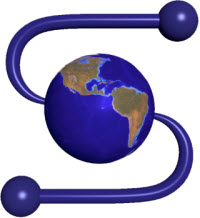
1995 A.D.: Java programming released. It would become one of the most popular program languages worldwide.
1996 A.D.: Intel Pentium Pro announced for release.
1996 A.D: The IEEE Computer Society celebrates 50 years. It is the world's largest organization of computing professionals.
2001 A.D.: Microsoft develops Power Calculator for Windows XP as part of “Power Toys." Power Calculator allows users to perform calculations, conversions, evaluate and graph functions. It is a free app.
2005 A.D.: Microsoft releases Windows Calculator Plus. The new calculator would allow users to perform many conversions and calculations and was made freely available.
2009 A.D.: Microsoft launches Windows 7 with newest version of Windows calculator. The Windows calculator would make it simple for people worldwide to perform simple calculations from their computer's operating software.
2011 A.D.: Apple releases ios5 that brings modern calculators to smartphone users.